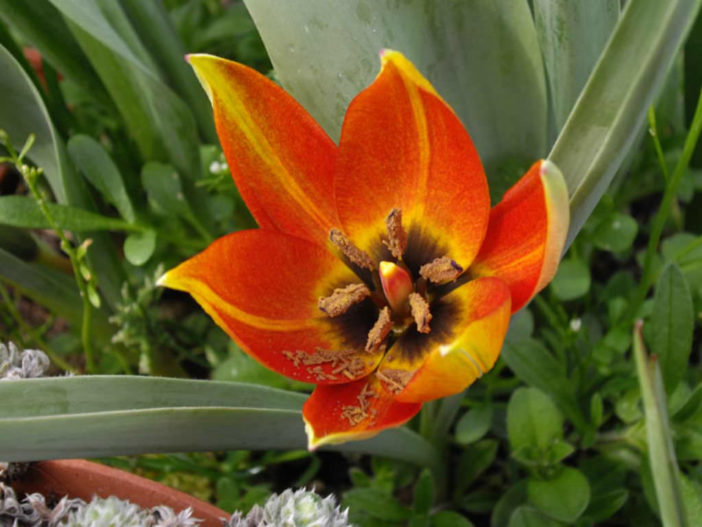Scientific Name
Tulipa orphanidea Boiss. ex Heldr.
Synonym(s)
Tulipa orphanidea subsp. orphanidea, Tulipa atheniensis, Tulipa bithynica, Tulipa crocata, Tulipa goulimyi, Tulipa hayatii, Tulipa hellespontica, Tulipa minervae, Tulipa splendens, Tulipa sylvestris var. orphanidea, Tulipa theophrasti, Tulipa thracica, Tulipa turcica, Tulipa whittallii
Scientific Classification
Family: Liliaceae
Subfamily: Lilioideae
Tribe: Tulipeae
Genus: Tulipa
Flower
Color: Copper-red, rarely yellow and red
Bloom Time: Spring season
Description
Tulipa orphanidea is a bulbous perennial with a glabrous or hairy stem that grows up to 8 inches (20 cm) tall. Leaves (which vary from 2 to 7) are up to 8 inches (20 cm) long, up to 0.8 inches (2 cm) wide), green, and often with a tinge of red along their edges. The stem bears 1 to 4 globular to star-shaped flowers with copper-red, rarely yellow, and red tepals, arranged in two whorls of three. The tepals bear a black, sometimes yellow, basal blotch interiorly. The six stamens are dark olive and up to 0.5 inches (1.2 cm) long.

Hardiness
USDA hardiness zone 4a to 9b: from −30 °F (−34.4 °C) to 30 °F (−1.1 °C).
How to Grow and Care
Tulips need a chilling period and are planted in the fall. Planting depth should be about three times the bulb's diameter; small bulbs will be about 5 to 6 inches (12.5 to 15 cm)deep, larger bulbs 8 to 10 inches (20 to 25 cm). Add a handful of bulb food or bone meal at planting time and water well. Keep watering weekly, if it doesn't rain, until the ground freezes. Feed again when the leaves emerge in the spring.
The foliage needs to be allowed to continue growing after the petals drop to feed the bulb. However, the flower stalks can be removed to prevent them from setting seeds and stealing energy from the bulb. Once the leaves die back, they will pull easily from the soil. The bulbs prefer to be on the dry side during summer dormancy. Feed each spring when the leaves first appear.
If you have trouble getting your tulips to come back each year, it could be because the winter is not cold enough, the summer is too wet, or something has eaten the bulbs. Whatever the reason, you may prefer to grow your tulips as annuals, replanting each fall. It's a bit more work, but you won't need holes as deep as perennialized planting.
See more at How to Grow and Care for Tulips.
Origin
This species is native to the southeast Balkans, Bulgaria, Greece, Aegean Islands, Crete, and western Turkey.
Cultivars
Links
- Back to genus Tulipa
- Plantpedia: Browse flowering plants by Scientific Name, Common Name, Genus, Family, USDA Hardiness Zone, or Origin
Photo Gallery
Click on a photo to see a larger version.




